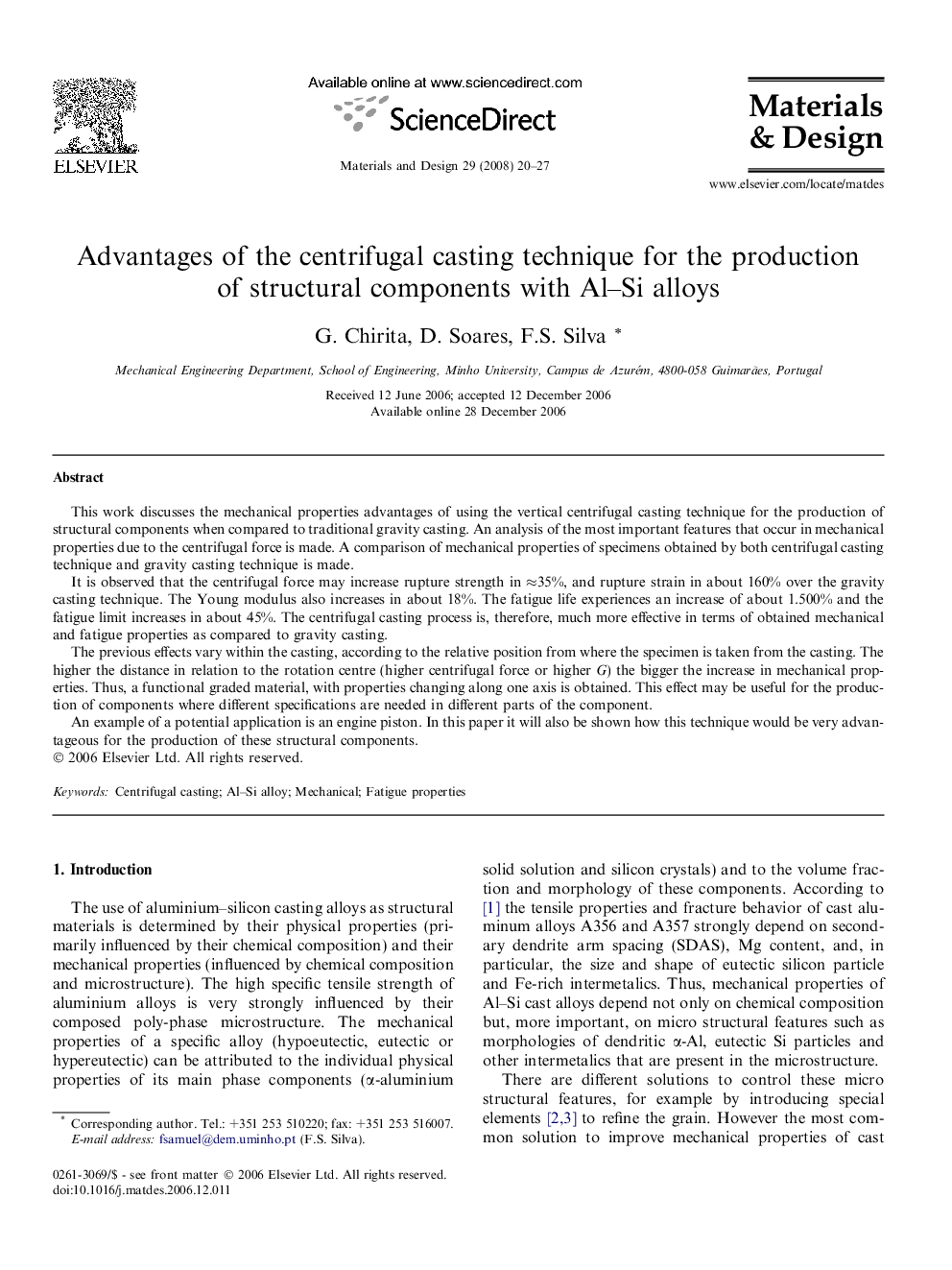| Article ID | Journal | Published Year | Pages | File Type |
|---|---|---|---|---|
| 833228 | Materials & Design (1980-2015) | 2008 | 8 Pages |
This work discusses the mechanical properties advantages of using the vertical centrifugal casting technique for the production of structural components when compared to traditional gravity casting. An analysis of the most important features that occur in mechanical properties due to the centrifugal force is made. A comparison of mechanical properties of specimens obtained by both centrifugal casting technique and gravity casting technique is made.It is observed that the centrifugal force may increase rupture strength in ≈35%, and rupture strain in about 160% over the gravity casting technique. The Young modulus also increases in about 18%. The fatigue life experiences an increase of about 1.500% and the fatigue limit increases in about 45%. The centrifugal casting process is, therefore, much more effective in terms of obtained mechanical and fatigue properties as compared to gravity casting.The previous effects vary within the casting, according to the relative position from where the specimen is taken from the casting. The higher the distance in relation to the rotation centre (higher centrifugal force or higher G) the bigger the increase in mechanical properties. Thus, a functional graded material, with properties changing along one axis is obtained. This effect may be useful for the production of components where different specifications are needed in different parts of the component.An example of a potential application is an engine piston. In this paper it will also be shown how this technique would be very advantageous for the production of these structural components.
